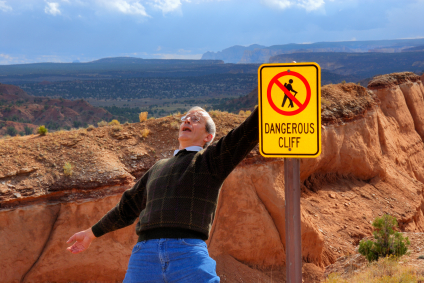 We invest a great deal of time talking and writing and preaching about change. We discuss resistance to change, fear of change, our own need for personal change and the challenges that organizations face when it comes to embracing change.
We invest a great deal of time talking and writing and preaching about change. We discuss resistance to change, fear of change, our own need for personal change and the challenges that organizations face when it comes to embracing change.
We’re not very good at changing, but we sure like to talk about it.
Spend a few sleepless nights channel surfing the infomercials (a discomfiting experience in more ways than one), and you’ll realize that there’s a tremendous amount of energy that goes into selling us stuff to help us change in all area of our lives.
In my non-scientific polling and personal leadership anthropological meanderings, I’m comfortable generalizing that most change initiatives fail. From diets and fitness programs to resolutions and new corporate directions, failure to change is epidemic.
While I suspect that our failure to change our own individual habits is a close cousin to change failures in business, I’ll focus on the latter here.
We Create Our Own Context Canyons:
Most managers and management teams spend a great deal of time processing on the drivers of change. By the time they start discussing or announcing changes, the issues and often the approaches are well-baked in their minds, while the rest of us on the receiving end are left with the deep thoughts of, “Huh?” or, “Why?” or, “Huh?”
The result is a gaping hole that I call the “Context Canyon” between managers suggesting change and employees processing on the implications of change. Depending upon the culture, resistance will range from loud and overt to quiet and passively aggressive. Nonetheless, resistance will reign supreme until the “Context Canyon” is filled-in not just by the managers, but also by the rest of the organization taking the time to internalize the case for change.
5 Common-Sense Ideas to Help with Change:
1. Recognize the Context Canyon. You and your peers may have worked through the case for change for months. You’ve had time to process on the rationale and think through and even debate options and alternatives. Mentally, you’ve long since accepted the need to change. Remember that if the first time that your employees hear about the change is when you announce it, they are just starting their mental processing journey. Your springing it on them has put them on the defensive from the beginning.
2. Involve People in Change Discussion Early and Often. People typically want to contribute to the discussions on change. They want to do their part to facilitate changes that will better serve customers and improve value for stakeholders. Treat them as an extended team of advisors. You show remarkable leadership courage and you show your respect for your employees by engaging them up-front on discussions about change.
3. Get the Why? Right! Again, beware the Context Canyon. People might hear your rationale on Why change is required, but that does not mean that they agree with your logic and your case. A pronouncement from on high typically does not equate to agreement or acceptance. Create safe opportunities for individuals and teams to ask questions, offer their thoughts and process on the case for change.
4. Ask for Help on the What? After awhile, the discussions on “Why Change?” need to move towards “What to do?” You’ll gain stronger organizational support by inviting and listening to active input, than you will dictating changes. Additionally, the shift in discussion from “Why?” to “What?” actually serves to strengthen the case for change. Remember, your organization requires the same amount of time that you do to process-on and internalize the case.
5. Address the WIIFM. Don’t fool yourself. People might be expressing concern about the organization, but everyone is thinking about, “What’s In it for Me?” (The less selfish sounding version is: “What does this mean for me in my job?”) This is the 600-pound gorilla on the back of the elephant in the room. The more time that you put into spanning Context Canyon, and the more that you allow your employees to help you “design the way forward,” the easier it is to deal with WIIFM. Your willingness to allow people to define how they have to change puts a great deal of individual and organizational angst to rest.
The Bottom-Line for Now:
While watching the various infomercials and pitch-people offering all manner of goods to improve our lives in the kitchen, the bedroom and the bank account, it occurred to me that we needed an offering to help us successfully navigate changes in our organizations and jobs. For only three installments of $39.95, I’ll help you navigate Context Canyon. And for the first 20 organizations to order, I’ll throw in the knife set.
There are no silver bullets or magic products that promote change. Use good old-fashioned common-sense based on human psychology. Context is King and involvement promotes engagement.
